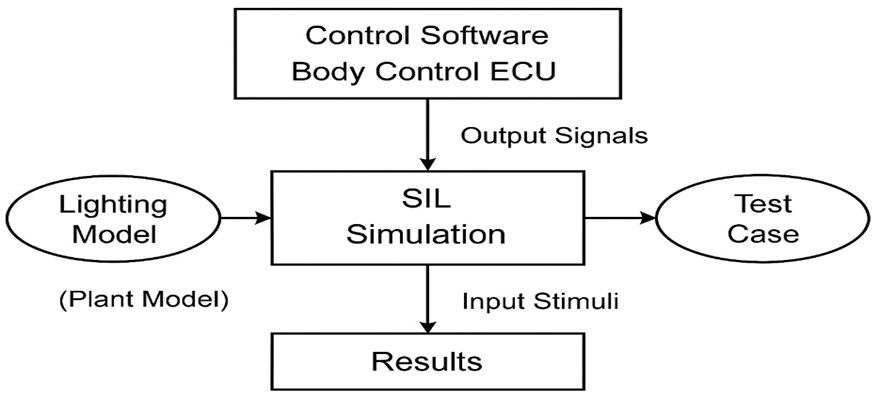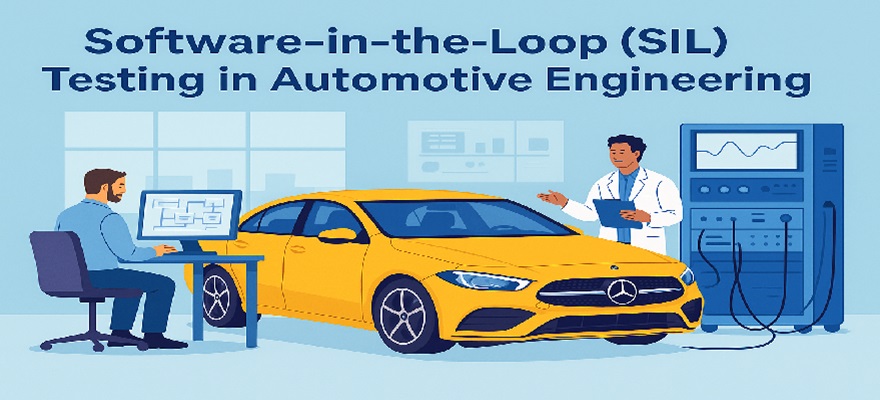- Salice Thomas
- Follow Me
- October 18, 2025
-
Introduction
As automotive systems grow in complexity, ensuring software reliability before hardware integration has become crucial. Software-in-the-Loop (SIL) testing provides a safe, cost-effective, and scalable way to verify automotive control algorithms virtually, long before any ECU prototype exists. SIL testing is a virtual validation technique used to verify the functionality, logic, and behavior of embedded software before deploying it to actual hardware. It’s a critical step in the V-model of automotive software development, especially for Electronic Control Units (ECUs) verification. SIL testing involves executing the control software in a simulation environment instead of on physical ECUs. It uses mathematical plant models (representing the vehicle, sensors, and actuators) to test how the software reacts to various inputs and operating conditions. Modern vehicles are becoming more complex with over 100 ECUs.
What is SIL Testing?
SIL testing involves running the actual embedded software code on a virtual simulation platform that mimics the target ECU environment. The software interacts with mathematical models of vehicle systems (called plant models) that represent sensors, actuators, and vehicle dynamics. This approach bridges the gap between early-stage algorithm design (Model-in-the-Loop, MIL) and hardware validation (Hardware-in-the-Loop, HIL). In essence, SIL allows engineers to execute, test, and debug production intended software in a simulated environment without any physical hardware.
Purpose of SIL Testing
SIL Testing Focus on the following
- Verifying control logic under various vehicle operating conditions.
- Identifying software integration issues early in the development cycle.
- Ensuring functional correctness and timing behavior before deployment.
- Reducing cost and time-to-market by minimizing the need for hardware prototypes.
- Supporting ISO 26262 functional safety and ASPICE Level 3+ compliance through systematic verification.
SIL Testing Setup

Software Under Test (SUT) : The production-intended controller software, typically in C/C++ or auto-generated from MATLAB/Simulink
Plant Model: Mathematical representation of the physical system (e.g., vehicle dynamics, braking system, or powertrain).
Simulation Environment: Tools like MATLAB/Simulink, dSPACE VEOS, ETAS ASCET, or Vector CANoe used to execute the simulation.
Test Automation Framework: Python, MATLAB scripts, or Jenkins pipelines for automated scenario generation, execution, and result logging.
Engineers run virtual test cases to check how the software responds to various stimuli such as throttle input, sensor noise, or road gradients
Advantages of SIL Testing
- Early defect detection: Catch logic and integration issues before hardware is available.
- Cost reduction: Minimize expensive ECU test benches and prototype builds.
- Repeatability: Reproduce identical conditions for debugging and regression testing.
- Scalability: Run hundreds of virtual tests in parallel using cloud-based setups.
- Safety: Test extreme or hazardous conditions (e.g., brake failure, icy roads) safely in simulation.
- Traceability: Supports requirement-to-test mapping for ASPICE and ISO 26262 audits.
Real World Example
Consider an Adaptive Cruise Control (ACC) function.
In SIL:
The control algorithm is compiled into executable code. A virtual vehicle model simulates longitudinal dynamics and radar sensor data. Various traffic and weather scenarios are executed automatically. Engineers verify whether the software maintains safe following distances and acceleration profiles. Only after SIL validation does the algorithm proceed to HIL testing and, finally, in-vehicle trials.
Future Outlook
As vehicles evolve into Software-Defined Vehicles (SDVs), SIL testing is becoming even more central. With advances in cloud-based simulation, digital twins, and AI-driven test automation, SIL will serve as a foundation for virtual validation at scale enabling faster OTA updates, continuous verification, and safer autonomous systems.




